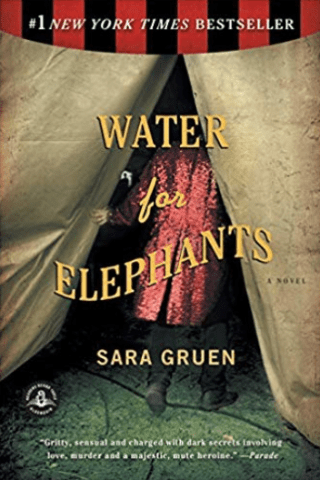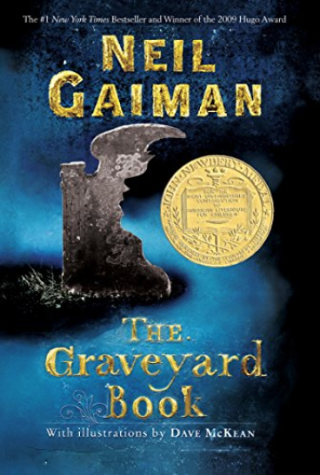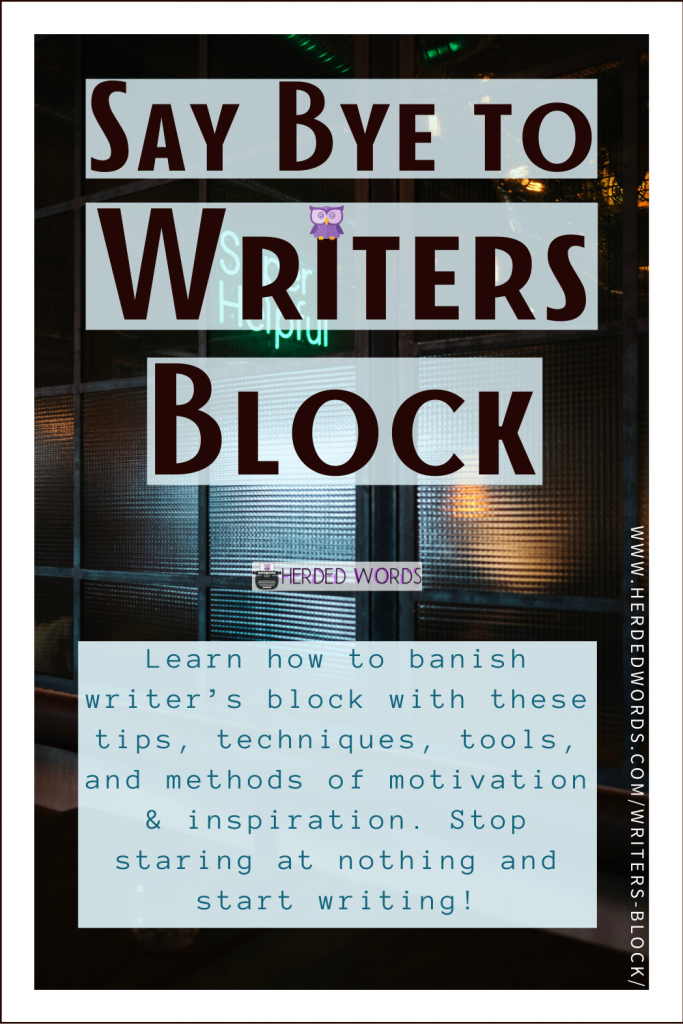
Listen to this post
Herdedwords.com uses affiliate links. This means we receive a commission on the sale of certain items. This is at NO additional cost to you. Visit the policies page to learn more.
There are four points of view that you can use to write your novel.
- First Person Point of View
- Second Person Point of View
- Third Limited Point of View
- Omniscient Point of View
It’s okay if you’re feeling overwhelmed. Each point of view is a massive undertaking with a lot to learn. Today we’re going to do an overview of each along with many examples.
Table of Contents
Point of View Quick Comparison
Point of View refers to who is telling the story and how they’re seeing it unfold.
Second person point of view is extremely uncommon in fiction. This comparison is only going to consider 1st, 3rd, and Omniscient.
| 1st | 3rd Limited | Omniscient | |
| Pronouns | I, me, my, mine and myself | He, his, him, himself, she, her, hers, herself, they, their, theirs, them, themselves, it, its, and itself | |
| Who’s the narrator? | The character | A watcher – from the perspective of a character | A watcher – from any perspective |
| Where’s the narrator? | – | Right with the POV character. | Anywhere. Everywhere. |
Pros & Cons of Points of View
Each point of view comes with positives and negatives. Let’s check them out.
First Person Point of View
✓ Strong Characterization
The best way to get to know the narrator – thoughts, feelings, opinions, etc., It’s all available to the reader so they get to know the narrator in depth.
✓ Reader Intimacy
The reader can feel like they are the main character. Who doesn’t like to feel like they’re on an adventure?
✓ A Clear Narrative Voice
When using the first person, it’s always clear who’s narrating. The voice can stay clear and consistent throughout the entire novel.
⁃ Difficult to Describe the Narrator
People don’t often spend a lot of time describing themselves. “Hi, I’m Jane. I’m a nice girl with blue eyes and waist-length hair.” “When I woke up this morning, I went to the mirror and stared hard at myself. My piercing blue eyes looked haunted.” Those are both terrible. Also, the reflection route is overdone – skip it. If everything in the novel comes from the brain of the narrator, how do you organically describe them? That’s one of the biggest challenges of using the first person.
⁃ Limited Range of Knowledge
First-person narration is limited to what the character knows. What they see, feel, hear, etc. This can make advancing the plot difficult because the narrator has to be involved in every single thing. Furthermore, the narrator might not understand the big picture (or even realize that it exists).
⁃ Narrow Experience
The reader will only experience what the main character does. This can limit the characterization and subplots available to an author.
Literature Examples: First POV
Third Person Limited Point of View
✓ Keep Secrets
If your POV character doesn’t know something, your narrator can’t know it either. It’s easy to keep secrets from your reader when writing in the third person limited.
✓ Flexibility
In the third person, you control the view – deep, light or overview. This gives you more flexibility to control how close the reader feels to a character at any given time.
✓ Multiple Point of View Characters
If you have multiple POV characters, it’s easy to shift between them. It’s also easy to identify which POV character is currently in use.
⁃ Multiple Point of View Characters
This is both a pro and a con.
Having too many POV characters can make readers less engaged with all the characters. It can also make the story harder to follow.
A big mistake authors make is changing perspectives too often or without alerting the reader.
⁃ Writing What Isn’t Known
It’s a common mistake to write things that the POV character wouldn’t know. It’s also very common to write from a perspective that does not belong to the POV character.
Remember – even though the narrator isn’t the character, it’s still experiencing everything from the perspective of the character. When was the last time you thought about your eye color? Your facial expression? Probably not something you think about regularly.
Start everything by thinking to yourself: “What would my character think/feel/see/experience?” The answer is what, and only what, you can write.
⁃ Improper Adverbs
This ties into the “writing what isn’t known” problem. For example, authors will use adverbs to describe how characters are feeling.
“I want to go home,” Jane said sadly. But how does the POV character know Jane is sad? Unless she says, “I feel sad.” The feeling is an assumption. Instead of assuming “sadly” use the actions of the other character to show the feeling.
⁃ Pronoun Problems
John went to the store. He met Jack there. Jack thought John was tired. He wasn’t. He asked what they should do.
Which ‘he’ is he? It’s easy to lose track of who’s who – especially in scenes with a lot of characters.
Literature Examples: 3rd Limited POV
Omniscient Point of View
✓ A Reliable Narrator
The omniscient narrator is the closest to reliable you’re going to get. Because they sit outside the story and see everything, they’re viewed as a trustworthy source of information.
✓ Secrets Revealed Anytime
The narrator can reveal secrets (or any information) to the reader whenever it needs to. There’s no worrying about if the character knows it because the omniscient narrator knows everything.
✓ Share Backstory
Backstory can be revealed naturally by an omniscient narrator. Flashbacks and dialogue become less necessary methods of imparting backstory.
⁃ Overshare
Since the omniscient narrator knows everything, it’s easy to reveal too much or too soon. Foreshadowing can feel forced.
⁃ Telling Instead of Showing
Again, that ‘knows everything’ perspective makes it too easy to fall into the trap of telling the reader what happened instead of showing them.
⁃ Where Are We?
Knowing everything includes the thoughts of all the characters. Slipping into the heads of too many characters can cause reader confusion.
Literature Examples: Omniscient POV
Can You Mix POVs?
You can do anything you want in your novel.
A better question: is it a good idea to use more than one point of view style.
Using 2 styles (first & third) will increase the difficulty of writing your novel – a lot. However, if you execute it well there’s no reason not to.
It’s still a very rare thing to find though.
Example: ME BEFORE YOU
ME BEFORE YOU, published in 2012, is a women’s fiction novel by Jojo Moyes. ME BEFORE YOU is book 1 of the Me Before You Trilogy.
ME BEFORE YOU spent 7 weeks at #1 on the NYT Bestseller List. It has sold over 14 million copies worldwide. The movie was released in 2016.
The prologue of ME BEFORE YOU is written in third person. The remainder of the novel is written in first person.
He runs a comb through his hair and switches on his mobile phone, wincing at the list of messages that immediately pushes its way through onto the little screen.
Everyone I knew hated Monday mornings, but I never minded them.
Example: A VISIT FROM THE GOON SQUAD
A VISIT FROM THE GOON SQUAD, published in 2010, is a collection of short stories by Jennifer Egan.
A VISIT FROM THE GOON SQUAD won the 2011 Pulitzer Prize for Fiction.
A VISIT FROM THE GOON SQUAD is a collection of short stories that flow together like a novel.
Some of the stories are written in first person and some of them are written in the third person.
The shame memories began early that day for Bennie,
Late at night, when there’s nowhere left to go, we go to Alice’s house.

Writing Practice
Today we’re going to examine point of view by comparing past exercises we did with LITTLE RED-CAP written by the Brothers Grimm. If you’re not familiar with the Grimm version, take a minute to give it a read.
These exercises are based on exercises from Writing a Story in First POV, Writing a Story in Third Limited POV, and Writing a Story in Omniscient POV. If you haven’t completed them, you should head over to those posts now.
Exercise: Compare
Use the work you did for Exercise #1 and Exercise #2 of First Person Point of View. If you haven’t done those exercises yet, now’s the time!
Your Task: Look at both your exercises and compare them.
- Give both versions a quick edit for verb tenses.
- What would be the benefit of writing the whole story as the mother?
- How would the rest of the story play out?
- What would be the benefit of writing the whole story as Red?
- How would the rest of the story play out?
- Which version do you prefer reading?
- Why do you think that is?
- Which version did you find it easier to write?
- Again, why do you think that is?
Bonus Challenge: Consider telling the story from the perspective of the wolf.
- How would this information be given?
- Or would you not include it?
- What changes would have to be made to the story?
Need an idea?
Here are the modified, but incomplete, passages from the original exercises.
| #1: POV Mother | #2: POV Little Red Cap |
| I said to my daughter: “Come, Little Red-Cap.” ______________________. “Here is a piece of cake and a bottle of wine; take them to your grandmother, she is ill and weak, and they will do her good.” ______________________. “Set out before it gets hot, and when you are going, walk nicely and quietly and do not run off the path, or you may fall and break the bottle, and then your grandmother will get nothing; and.” ______________________. “When you arrive and go into her room, don’t forget to say, “Good morning”, and don’t peep into every corner before you do it.” ‘I will take great care,’ said Little Red-Cap, and gave her hand on it. | My mother called to me: “Come, Little Red-Cap.” Couldn’t she see I was busy? I walked over and glared at her. “Here is a piece of cake and a bottle of wine; take them to your grandmother, she is ill and weak, and they will do her good.” ______________________. “Set out before it gets hot, and when you are going, walk nicely and quietly and do not run off the path, or you may fall and break the bottle, and then your grandmother will get nothing; and.” ______________________. “When you arrive and go into her room, don’t forget to say, “Good morning”, and don’t peep into every corner before you do it.” ‘I will take great care,’ I said. |
Exercise: Compare
Use the work you did for Exercise #1 and Exercise #2 of Third Person Limited Point of View If you haven’t done those exercises yet, now’s the time!
Your Task: Look at both your exercises and, just like with Exercise #1, compare them.
- Give both versions a quick edit for verb tenses.
- What would be the benefit of writing the whole story as the wolf?
- How would the rest of the story play out?
- What would be the benefit of writing the whole story as Red?
- How would the rest of the story play out?
- Which version do you prefer reading?
- Why do you think that is?
- Which version did you find it easier to write?
- Again, why do you think that is?
Need an idea?
Here are the modified, but incomplete, passages from the original exercises.
| #1: POV Wolf | #2: POV Little Red Cap |
| The wolf thought to himself: ‘What a tender young creature! what a nice plump mouthful—she will be better to eat than the old woman. I must act craftily, so as to catch both.’ So he walked for a short time by the side of Little Red-Cap, and then he said: ‘See, Little Red-Cap, how pretty the flowers are about here—why do you not look round?” The wolf watched as ______________________. “I believe, too, that you do not hear how sweetly the little birds are singing; Listen,” the wolf suggested. ______________________. “You walk gravely along as if you were going to school, while everything else out here in the wood is merry.’The wolf smiled as Little Red-Cap ran from the path into the wood. | The wolf walked for a short time by the side of Little Red-Cap, and then he said: ‘See, Little Red-Cap, how pretty the flowers are about here—why do you not look round? I believe, too, that you do not hear how sweetly the little birds are singing; you walk gravely along as if you were going to school, while everything else out here in the wood is merry.’ Little Red-Cap raised her eyes, and when she saw the sunbeams dancing here and there through the trees, and pretty flowers growing everywhere, she thought: ‘Suppose I take grandmother a fresh nosegay; that would please her too. It is so early in the day that I shall still get there in good time’; and so she ran from the path into the wood to look for flowers. And whenever she had picked one, she fancied that she saw a still prettier one farther on, and ran after it. |
Exercise: Compare
Use the work you did for Exercise #1 and Exercise #2 of Omniscient Point of View If you haven’t done those exercises yet, now’s the time!
Your Task: Look at both your exercises and, just like with Exercise #1 and 2, compare them.
- Give both versions a quick edit for verb tenses.
- What would be the benefit of writing the whole story as an omniscient narrator?
- What would be the drawbacks/struggles of writing the whole story with an omniscient narrator?
Exercise: Consider
Now that you have several versions of the story (written using all the POVs), it’s time to consider how each affects the story.
- Which version do you prefer reading: 1st, 3rd limited, or omniscient?
- Why do you think that is?
- Which version did you find easier to write?
- Again, why do you think that is?
- List at least 2 pros and 2 cons of each version.
No Right or Wrong

Choosing a point of view can be a difficult decision. It’s worth seriously considering each of your options and evaluating how they might affect your story.
The main thing I hope you learned today is that there’s no right or wrong answer. All POVs can work, it’s up to you to choose the one you think will serve your story (and reader) best.
What do you think of different points of view? Do you have a reading preference – why? Do you have a writing preference – why? Share your thoughts in the comments!
Now that you’re a point of view master, it’s time to make sure you won’t fall victim to writer’s block. Check out How to Banish Writer’s Block Permanently next.
Like this post? Please PIN IT and follow me on social media. Thanks!



















